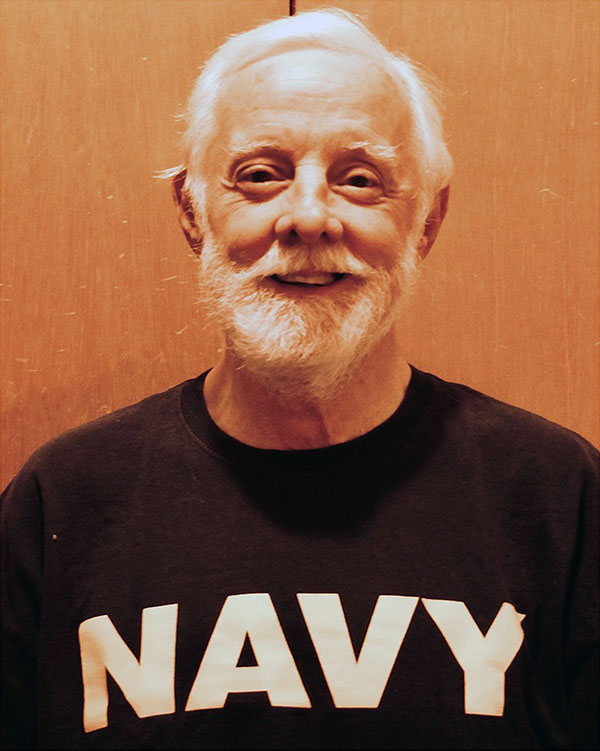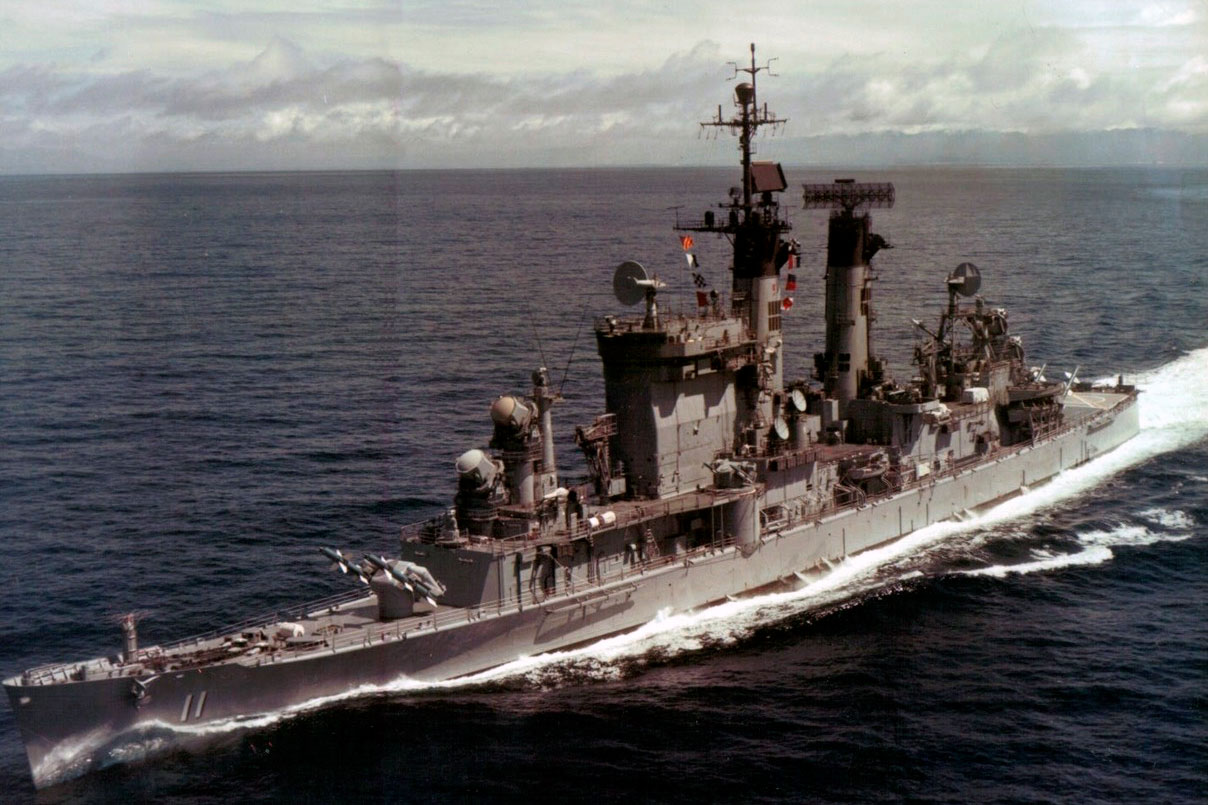U.S. Navy Vietnam War Lombard, IL Flight date: 10/27/21
By David Adams, Honor Flight Chicago Veteran Interview Volunteer
Howard Fry was born and grew up in Rockford, IL. He graduated from Rockford East High School in 1967. During high school he was a member of Junior ROTC. Thus, he learned basic military skills including marching and handling a rifle. His ROTC experiences would pay dividends soon enough. After attending two years of college at Rock Valley Junior College, he completed his college education at Illinois State University, graduating with a Bachelor of Science degree in 1971. Right after college graduation, he received a draft classification of 1A.
Before the Army drafted him, Howard received a phone call from a local Navy recruiter. The recruiter explained the Navy’s “Two by Six” program for recruits. This consisted of two years on active duty and four years in the Naval Reserve for a total of six years of service. Howard was convinced this was a better option than the Army. He applied, and the Navy accepted him into the program in July. He followed in the footsteps of his father who served in the Navy on an LST (Landing Ship, Tank) which was steaming for Japan at the end of WWII, and his maternal grandfather who served in the Marines between the wars.
He attended Boot Camp in San Diego in the summer of 1971. There he was made 2nd Platoon Leader due to his college degree and Junior ROTC experience. He graduated from the seven week course as an “honor man” whose designation was based on testing and his leadership position. Howard’s further Navy schooling occurred at Naval Station Treasure Island, San Francisco. He trained to be a damage controlman at “A” school lasting ten weeks. Howard lived what he calls “a little boy’s dream to be a fireman.” When firefighting on a ship, he recalls learning that fuel floats on water in the ship’s bilge. The technique according to Howard was to separate the fire into two portions. One team pours water on its half to starve the fire of oxygen. Once during an exercise, his team drowned its fire but the other team did not and flames were everywhere. Result, “do it again.” He also trained in NBC (nuclear, biological, chemical) warfare.
After a short leave, he reported back to San Francisco to stand by for orders. The first week of January, 1972 found Howard on a military charter flight from Oakland to Hawaii and finally to Clark AB, Philippines. He had a “pleasant bus ride” through the verdant countryside to Naval Base Subic Bay. Within one week, he was given thirty minutes notice to pack and report to his ship. Did he have enough time? According to Howard, “you never unpack.” He boarded the USS Chicago (CG-11), a guided missile cruiser which had a complement of 1,142 officers and enlisted men. Once underway he quickly learned “I don’t have sea legs.”


He reports that the cruiser functioned as the PIRAZ (Positive Identification Radar Advisory Zone) station in the Tonkin Gulf, just off the coast of North Vietnam. The cruiser monitored all aircraft flying over the gulf, directed friendly CAP (combat air patrol), coordinated fighter escorts, vectored damaged bombers around enemy missile sites, set up tanker rendezvous points for planes low on fuel, and directed helicopters on rescue operations. The cruiser also directed friendly fighters against North Vietnamese aircraft using the “Red Crown” call sign. Chicago was armed with Talos anti-radar homing missiles, the Navy’s state-of-the-art SAM (surface to air missile), in forward and aft batteries.
Among Howard’s most vivid memories were his periodic visits to the Combat Information Center (CIC) where he could view the action. There he observed Chief Radarman Larry Nowell as air intercept controller directing USAF and Navy fighters to engagements with North Vietnamese MiGs. “USAF fighter pilots loved this guy,” according to Howard. After three months in the Tonkin Gulf, Chicago sailed for San Diego in March. Chicago was recalled to its station on April 3 before it had sailed very far. Howard learned that Chicago’s cruise was extended because President Nixon ordered the mining of Haiphong Harbor to begin on May 9. On that day Howard was asleep in his bunk when he heard a call to battle stations and the words he’ll never forget, “this is not a drill.” Thus began the Navy fighters’ mining of Haiphong Harbor. He leaped out of his bunk and ran to the ship’s forward-most repair locker below decks to get his battle gear. He was very near the Talos forward battery. From that location he could hear the missiles being loaded on launch rails and then fired at what he learned were MiGs creating a threat to the mine-laying Navy fighters. The Talos missiles that fired from the forward battery were credited with one MiG kill that day. In all, Chicago was credited with fifteen MiGs, fourteen due to Chicago’s direct control of fighters (twelve attributed to Chief Nowell), and one from the Talos May 9 engagement. Its success was recorded on the bridge with red MiG silhouettes.
Howard and others from the ship’s engineering department had periodic duties on the mess deck. He recalls scrubbing the ovens with Kool Aid powder. The sailors raved about his scrambled eggs made in batches of “dry or wet.” Better was his chili. Following standard Navy recipes always produced a bland dish. His mess crew added all the hot sauce and chili powder they could lay their hands on. The sailors loved it. He also remembers that the Tonkin Gulf sharks were among the best fed because the ship’s garbage was dumped from the fantail.
Chicago left PIRAZ station on June 21, 1972 and returned to Long Beach via Hawaii. Howard completed his active duty service on Chicago on December 13, 1973 when he was honorably discharged as a Petty Officer Third Class. Howard completed one year and eleven months of sea service and nearly six months of training. He received the Combat Action Ribbon, Naval Unit Commendation, Vietnam Service Medal, National Defense Service Medal, and Republic of Vietnam Service Medal. Overall Howard rates his service on Chicago as a “very positive experience.”
Upon his return to Rockford he taught at his old high school, Rockford East, before entering DePaul Law School in the fall of 1974. He took advantage of the G.I. Bill to pay for his law degree. Graduating in 1977, he entered private practice concentrating on family law. After a successful legal career, he retired in 2007 and the next year took a position as a teacher’s aide in Elmhurst Community Unit School District 205 where he still works.
Howard met his wife Carol at his law firm where she was the office manager. Instead of barking orders, he treated her with courtesy and respect – the rest is history. They have been married for 32 years and have a son and a daughter. He thoroughly enjoys assisting junior high school students with their Individualized Education Plans.
Thank you, Howard, for your dedication and distinguished service! Enjoy your special day of honor in Washington D.C. with your comrades in arms!


